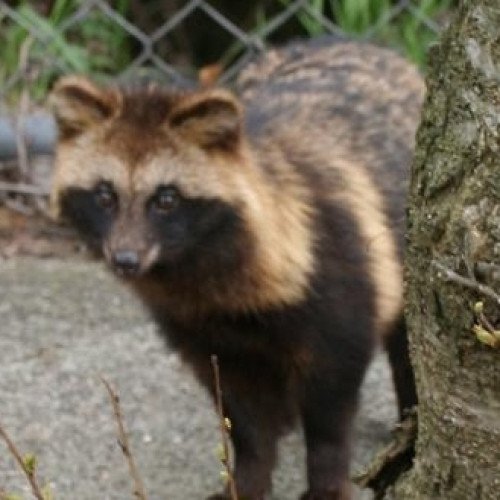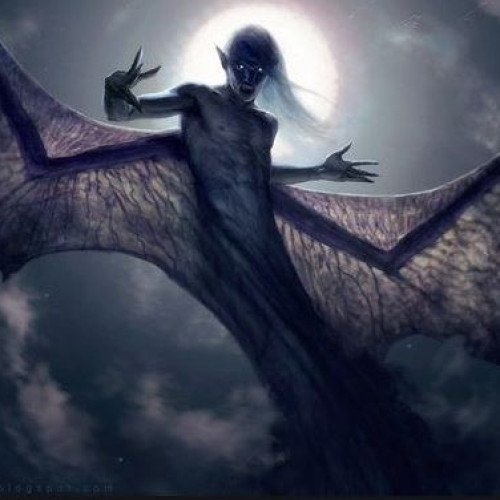Japanese raccoon dog vs Vrykolakas

Japanese raccoon dog
The Japanese raccoon dog (Nyctereutes procyonoides viverrinus), also known as the tanuki (Japanese: タヌキ or 狸; pronounced [taꜜnɯki]), is a subspecies of the Asian raccoon dog. Researchers have suggested that they be considered a separate species, N. viverrinus, or that raccoon dogs of Japan could be further divisible into separate subspecies as N. p. procyonoides (hondo-tanuki, ホンドタヌキ, 本土狸) and N. p. albus (ezo-tanuki, エゾタヌキ, 蝦夷狸), but both views are controversial. As the tanuki, the animal has been significant in Japanese folklore since ancient times. The legendary tanuki is reputed to be mischievous and jolly, a master of disguise and shapeshifting, but somewhat gullible and absentminded. It is also a common theme in Japanese art, especially statuary. Tanuki is often mistakenly translated into English as "badger" or "raccoon" (as used in the US version of the movie Pom Poko and outlined in Tom Robbins' book Villa Incognito), two unrelated types of animals with superficially similar appearances. Traditionally, different areas of Japan had different names for raccoon dogs as animals, which would be used to denote different animals in other parts of the country, including badgers and wild cats; however, the official word in the standard Tokyo dialect is now tanuki, a term that also carries the folkloric significance. The North American raccoon (Procyon lotor) is translated as araiguma (アライグマ, 洗熊) in Japanese, while badger is translated as anaguma (穴熊, lit. hole bear) or as mujina (貉, 狢).
Statistics for this Xoptio

Vrykolakas
Vrykolakas (Greek βρυκόλακας, pronounced [vriˈkolakas]), also called vorvolakas or vourdoulakas, is a harmful, undead creature in Greek folklore and in Salento culture (in Salento it is known as "brucolaco"). It shares similarities with numerous other legendary creatures, but is generally equated with the vampire of the folklore of the neighbouring Slavic countries. While the two are very similar, vrykolakas eat flesh, particularly livers, rather than drink blood, which combined with other factors such as its appearance bring it more in line with the modern concept of a zombie.